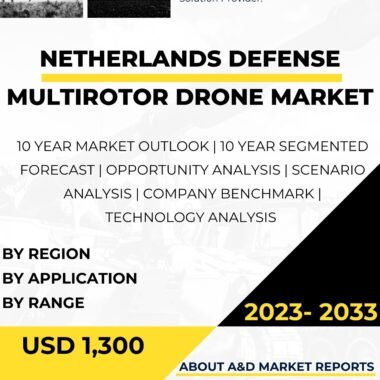Description
The Japan Aerostat Systems market has witnessed steady growth and increasing importance in recent years, driven by the country’s efforts to enhance its defense capabilities, bolster surveillance and reconnaissance capabilities, and address evolving security challenges in the region. Aerostat systems, also known as tethered balloons or airships, offer a cost-effective and versatile platform for intelligence, surveillance, reconnaissance (ISR), and communication relay operations.
The strategic location of Japan in the Indo-Pacific region, coupled with a complex and dynamic security environment, has prompted the Japanese government to prioritize the modernization of its armed forces. In this context, Aerostat systems have emerged as an invaluable tool for enhancing situational awareness, border security, and disaster response capabilities.
One of the primary applications of Aerostat systems in Japan is maritime surveillance. With its extensive coastlines and vital sea lanes, Japan faces numerous security challenges related to maritime activity. Aerostat systems equipped with radar and other sensor payloads offer a persistent and cost-effective solution for monitoring maritime traffic, detecting potential threats such as smugglers, pirates, and unauthorized vessels, and supporting search and rescue operations.
Furthermore, Japan’s interest in Aerostat systems is driven by its desire to improve its maritime domain awareness in the East China Sea, where territorial disputes with neighboring countries have been a point of contention. The ability of Aerostats to provide wide-area surveillance and long endurance makes them well-suited for monitoring these disputed waters and maintaining sovereignty over Japan’s territorial boundaries.
The Japanese government’s investment in Aerostat systems is not limited to maritime applications. These systems have also found utility in providing persistent surveillance over land borders and remote areas, where traditional surveillance methods may be limited or costly to deploy. Aerostat-based ISR capabilities offer enhanced situational awareness and facilitate timely response to potential security threats and natural disasters.
Moreover, Aerostat systems have been increasingly integrated into Japan’s disaster management efforts. The country is prone to natural disasters such as earthquakes, tsunamis, and typhoons. Aerostats equipped with advanced imaging and communication equipment can play a vital role in disaster response, allowing authorities to assess damage, monitor affected areas, and coordinate relief efforts efficiently.
The collaboration between the Japanese government and the defense industry has been instrumental in the development and deployment of Aerostat systems. Local defense companies are actively engaged in manufacturing Aerostats and integrating advanced sensor payloads, including radar, electro-optical/infrared cameras, and communication systems. This collaboration has not only boosted Japan’s defense capabilities but also contributed to the growth of its domestic defense industry.
International partnerships have also played a significant role in shaping Japan’s Aerostat systems market. The country has engaged in technology transfers and joint ventures with allied nations to access cutting-edge technologies and enhance the performance of its Aerostat platforms. These partnerships have also fostered interoperability with partner nations during joint military and disaster response operations.
While the adoption of Aerostat systems in Japan offers numerous benefits, challenges remain in ensuring their effective and sustained operation. Weather conditions can significantly impact Aerostat operations, with strong winds and adverse weather affecting the stability and endurance of these systems. Efforts are underway to develop robust and weather-resistant Aerostats to mitigate these challenges.
Additionally, airspace management and regulations are critical considerations for Aerostat deployment, especially in densely populated and heavily trafficked areas. Ensuring safe and secure operations of Aerostats in civilian airspace requires collaboration between defense authorities and civil aviation authorities.
In conclusion, the Aerostat Systems market in Japan has experienced steady growth due to the country’s focus on defense modernization and enhanced surveillance capabilities. These tethered balloon systems offer cost-effective and versatile solutions for maritime surveillance, border security, disaster response, and intelligence, surveillance, reconnaissance (ISR) operations. Collaborations between the Japanese government and the defense industry, as well as international partnerships, have driven innovation and facilitated the integration of advanced technologies into Aerostat platforms. While challenges related to weather conditions and airspace management persist, Japan’s commitment to addressing these issues underscores its determination to leverage Aerostat systems for bolstering its defense capabilities and maintaining security in the Indo-Pacific region.




